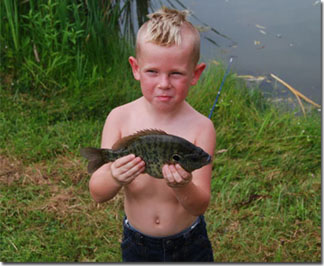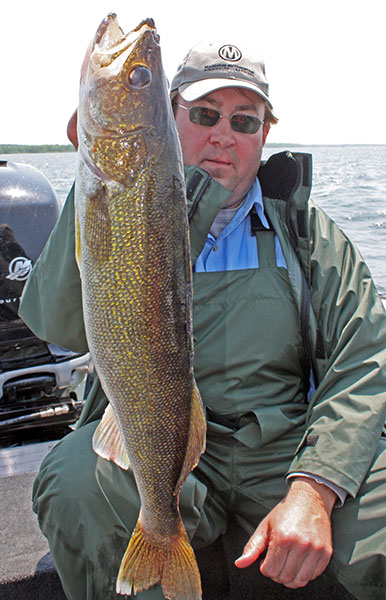Walleye Slot Limit On Upper Red Lake
The walleye bag limit on Upper Red Lake will be cut from four to three fish under new regulations announced Monday by the Department of Natural Resources.
Minnesota DNR Reports (Photo by Brian Peterson) Anglers fishing during the winter season on Upper Red Lake in northern Minnesota will have a three-walleye bag limit, with only one walleye longer than 17 inches allowed. Heavy winter fishing over the last four years necessitated more restrictive regulations. 1, the limit on Upper Red will revert to the 17- to 26-inch protected slot. What remains to be seen, Barnard said, is whether the winter bag is four walleyes or three. The Minnesota Department of Natural Resources has adjusted slot limits on Upper Red Lake. 1, all walleyes from 17 to 26 inches long will have to be released. The protected slot is currently 20 to 26 inches. Anglers can still keep four walleyes from Upper Red Lake, and one may still be longer than 26 inches.
The reduction was prompted by four consecutive years of heavy winter fishing pressure on the far-northern lake. On average in that span, the DNR has estimated 1.6 million hours of fishing pressure per season. Each winter, state-licensed anglers have taken home about 130,000 pounds of walleyes, the DNR said.
The new three-walleye possession limit for Upper Red allows only one of the fish to be longer than 17 inches. The change goes into effect Nov. 1. DNR’s Andy Thompson, area fisheries supervisor in Bemidji, said anglers will need a reliable measuring device because many walleyes caught this winter will measure just above or just below the 17-inch size restriction.
DNR co-manages the walleye harvest on Red Lake in cooperation with Red Lake Nation. The 2021 open-water regulations won’t be set until winter fishing concludes.
———
©2020 the Star Tribune (Minneapolis)
Visit the Star Tribune (Minneapolis) at www.startribune.com
Upper Red Lake Walleye Regulations
Distributed by Tribune Content Agency, LLC.
News Release Mille Lacs Lake winter anglers allowed 1 walleye starting Dec. 1'Winter anglers on Mille Lacs Lake will enjoy a walleye harvest this winter for the fifth season in a row. Starting Tuesday, Dec. 1, anglers will be allowed to keep one walleye between 21-23 inches or one fish longer than 28 inches. This is the same regulation as the last two winter seasons.
“It’s good news that anglers will be able to harvest walleye again this winter,” said Sarah Strommen, commissioner of the Minnesota Department of Natural Resources. “Conservative management continues to sustain good fishing on Mille Lacs.”

Mille Lacs was a popular ice fishing destination during the winter of 2019-2020, in part due to poor ice conditions on other large Minnesota lakes. Anglers put in a record of more than 3 million fishing hours on the lake last winter. In each of the previous three winters, anglers spent about 2 million hours fishing on Mille Lacs.
“We want to provide anglers the opportunity to catch and keep some fish when the walleye population can support it,” said Brad Parsons, DNR fisheries section manager. “As in recent winters, we’re confident that the walleye population is abundant enough to support some harvest.”

Walleye Slot Limit On Upper Red Lake Minnesota
Winter regulations are set after the DNR completes its annual fall netting assessment. The DNR’s 2020 assessment found that the walleye population has remained relatively stable over the past four years, having rebounded from population lows seen from 2012 to 2016.
Harvest from the winter of 2020-21 will be counted toward the state’s annual share of walleye from Mille Lacs under the 1837 treaty. State anglers share harvest with eight Ojibwe tribes that have fishing rights under the treaty.
Walleye Slot Limit On Upper Red Lake Fishing Resorts
The state’s allowable harvest for the coming year will be set in early 2021 through discussions between the state and the tribes. The DNR will set open water fishing regulations in March 2021 following discussions with the tribes and the Mille Lacs Fisheries Advisory Committee and after the conclusion of winter fishing.
Conservative fishing regulations in response to population lows have contributed to the recovery, allowing the DNR to offer anglers a harvest opportunity in recent winters and in May 2019 during the open water fishing season.
Insights from fall assessments
While encouraged by the rebound in walleye abundance, the DNR is taking a cautious approach to managing Mille Lacs’ walleye fishery. Survival of walleye to age 3 and older has been inconsistent in recent years.
The 2013 year class – that is, fish born in 2013 -- continues to be the most abundant class of fish. These fish are mainly 17-21 inches long, with faster growing individuals exceeding 21 inches. Year classes from 2009 to 2012 were weak, and had low numbers grow to adults, while those produced since 2013 have had more fish survive to adulthood.
The 2014 year class is below average compared with those from the last 15 years. The 2015 and 2016 year classes appear close to average, and the 2017 year class is well above average. Since 2008, only the 2013 and 2017 year classes have been above average.
“We are encouraged to see additional year classes that will be contributing to the fishery,” Parsons said. “Having multiple year classes approaching maturity makes us comfortable with continuing to harvest some of the 2013 year class under this winter’s regulation.”
The assessment also looks at food abundance and walleye health. Perch and tullibee are the primary food source for Mille Lacs’ walleye. Perch and tullibee from 0 to 2 years old were caught in moderate numbers.
Walleye condition, often referred to as plumpness, remained lower than recent averages. The relatively thin condition of fish suggest that forage was limited during parts of this year.
That lack of food contributed to the high catch rates in Mille Lacs early this summer. But that rate dropped in August and September, suggesting that the availability of forage improved later in the summer as fish hatched in 2020 grew and became a part of walleye diets.
“A lower catch rate in the late summer can sometimes carry over into the winter if forage is abundant,” Parsons said. “But predators also can reduce available forage later in the winter, possibly leading to an improved bite.”
Walleye Slot Limit On Upper Red Lake Walleye
Information about Mille Lacs Lake, including complete fishing regulations, is available on the DNR website at mndnr.gov/millelacslake.'